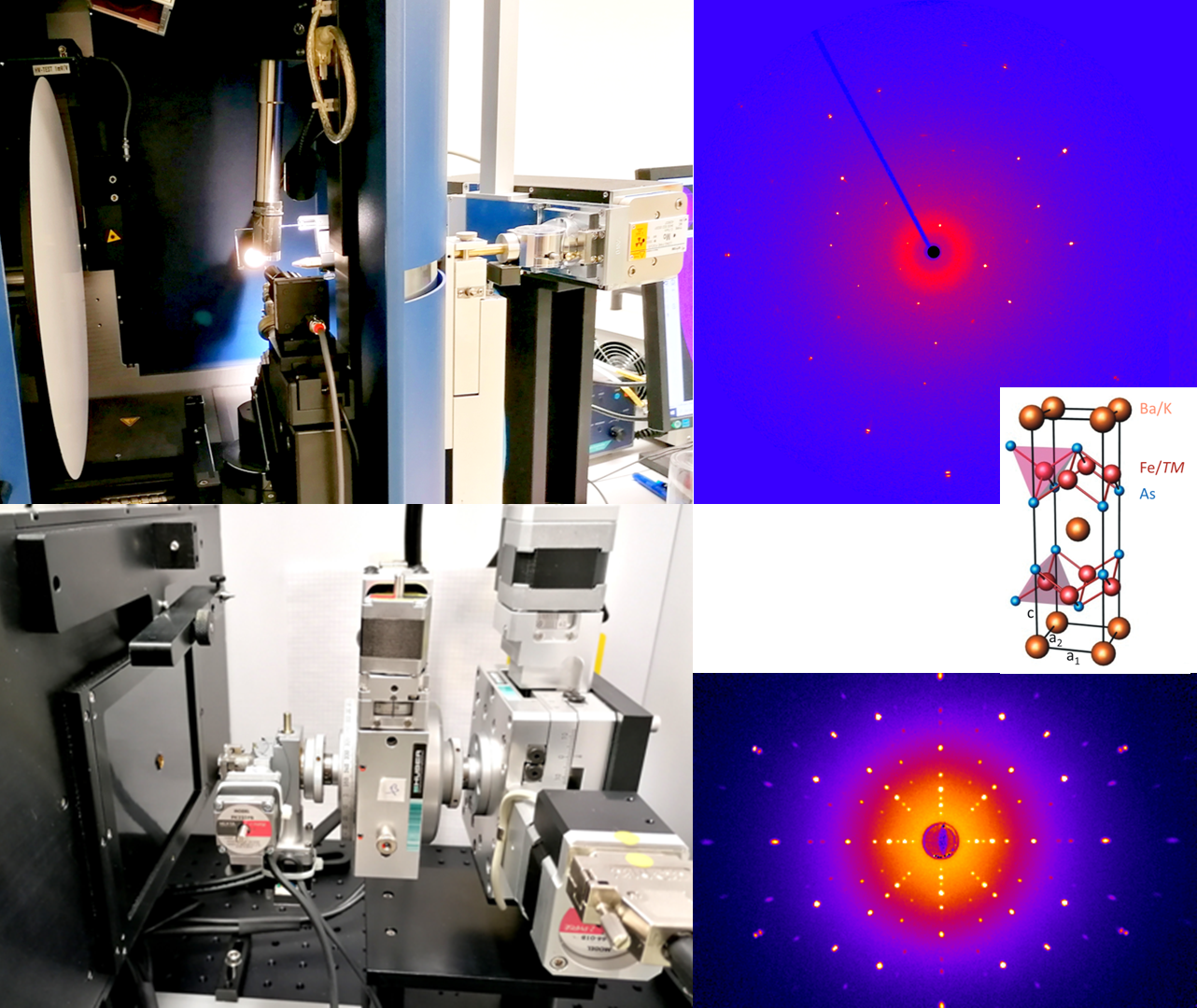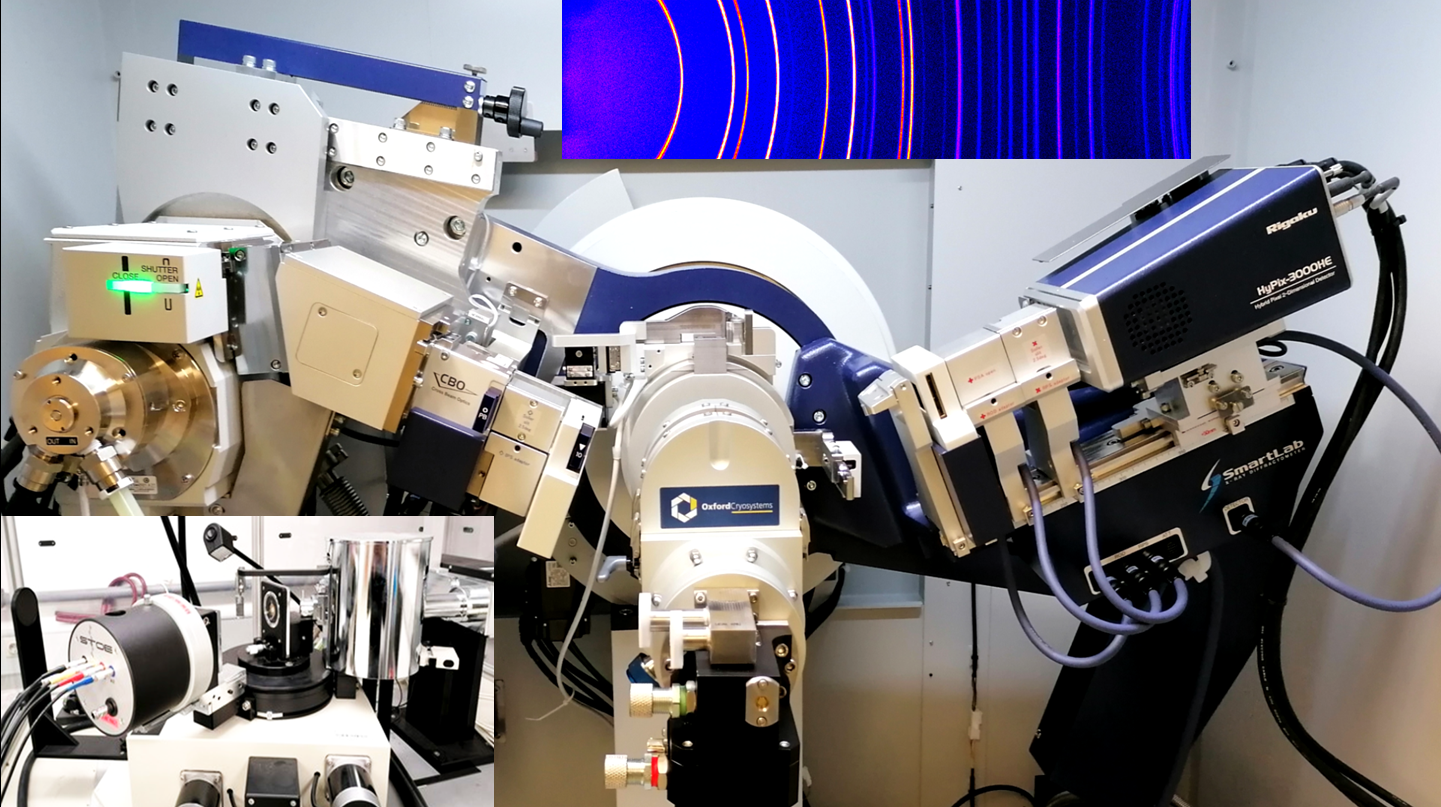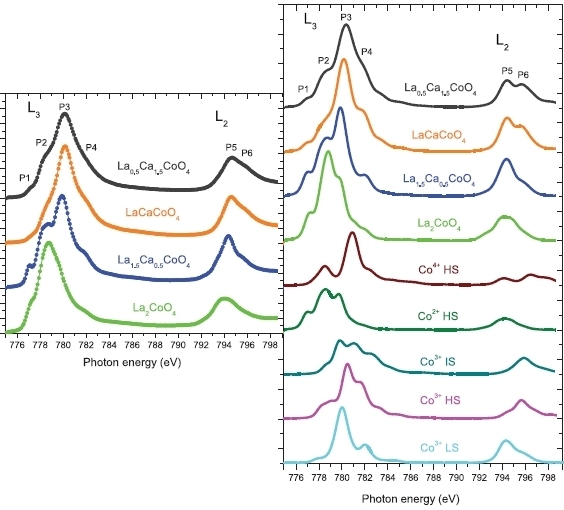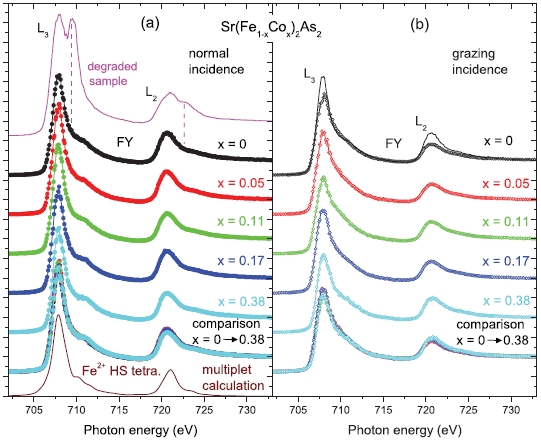Working Group Electron Spectroscopy
|
X-Ray Diffraction (M. Merz)
For the characterization of samples of crystalline materials, IQMT operates an in-house x-ray laboratory with a number of x-ray diffractometers :
- An imaging plate single-crystal diffractometer STOE IPDS 2T allows for a very accurate and detailed determination of lattice parameters, atomic positions, bond lengths or structural/nematic phase transitions in the temperature range between 80 K and 400 K.
- In a further imaging plate system equipped with a Heatstream, single crystals can be investigated at temperatures up to 1100 K. The system is operated in collaboration with INT.
- A fully motorized PHOTONIC SCIENCE Laue diffraction system with backscattering geometry is used for high-precision adjustment (~ 0.1°) of single crystals.
- For transmission measurements in pseudo-Guinier geometry with pure Mo-Kα,1 radiation, a STOE STADI P powder diffractometer with a Ge(111) monochromator on the primary side and an area-sensitive detector is available.
- Moreover, a modular rotating anode system RIGAKU Smartlab 9 kW can be operated with Cu as well as Mo radiation for the measurement of powder and film samples. For high-resolution measurements in Bragg-Brentano geometry the system is equipped with a Ge(111) Johansson monochromator. Furthermore, all optical components (parabolic as well as elliptical x-ray mirrors and double monochromators) for operation in high-resolution parallel-beam or focusing geometry are available. Flat samples can be measured down to temperatures of ~ 10 K, flat and capillary samples up to ~ 1500 K. A sample changer allows for the measurement of up to 10 samples in a row. An Eulerian cradle can be used for the measurement of thin films. Depending on the application an area-sensitive Si-HPC- or a Si-strip detector is employed.
|
|
Cobaltates
For many transition-metal oxides, the intricate interplay between charge, spin (up or down), orbital, and lattice degrees of freedom leads to interesting and unusual electronic and magnetic phenomena such as high-temperature superconductivity, colossal magnetoresistance, and complex magnetic orbital ordering. In the case of the cobaltates, the spin state is an additional degree of freedom depending on the delicate balance between the crystal-field splitting, i.e., the energetic splitting between t2g and eg orbitals, and the exchange interaction associated with Hund’s rule coupling.
|
Manganites
The charge ordering (CO) phenomena in colossal magneto resistance (CMR) materials occurs in perovskite manganese oxides in which the on-site Coulomb interaction is stronger than the kinetic energy of the charge carriers. The antiferromagnetic insulating (AFMI)-ferromagnetic metallic (FMM) transition induced by charge carrier doping in many of the CMR compounds is suppressed by the formation of CO, especially when the carrier concentration equals a commensurate fraction such as 1/8, 1/3 or 1/2. This CO state is intimately related to the CMR properties.
| Selected Publications: |
| (5) M. K. Dalai et al., Phys. Rev. B 85 (2012) 155128 |
| (6) P. Pal et al., Physica B 406 (2011) 3519 |
| (7) M. Merz et al., Phys. Rev. B 74 (2006) 184414 |
Fe-based Superconductors
Superconductivity in iron-based
materials emerges - as in heavy-fermion systems and high-Tc cuprates - in the vicinity of a magnetic instability. Edge-sharing Fe(As/Se)4 tetrahedra are the structural key ingredient. Many studies strongly suggest that distinct nesting properties of the Fermi surfaces are important for the magnetic properties (development of a spin density wave and antiferromagnetic order at low temperature) as
well as for the superconducting characteristics.
Our investigation shows that charge carrier doping of
the Fe 3d states is not crucial for superconductivity in Co-doped Fe pnictides. Rather, the
change of the topology of the Fermi surface induced by the Co-substitution
seems to be the key parameter.
|
| Selected Publications: |
| (8) S. Chibani et al., npj Quantum Mater. 6 (2021) 37 |
| (9) M. Merz et al., J. Phys. Soc. Jpn. 85 (2016) 44707 |
| (10) M. Merz et al., Phys. Rev. B 86 (2012) 104503 |
Collaborations with External Groups
Within the allocation of ANKA beam time to external users we collaborate with many external groups who perform experiments at WERA. Many projects in the field of magnetism and superconductivity are of common interest.




